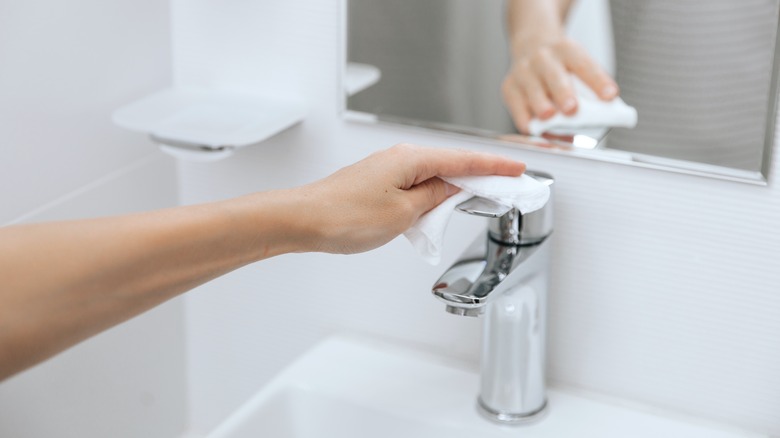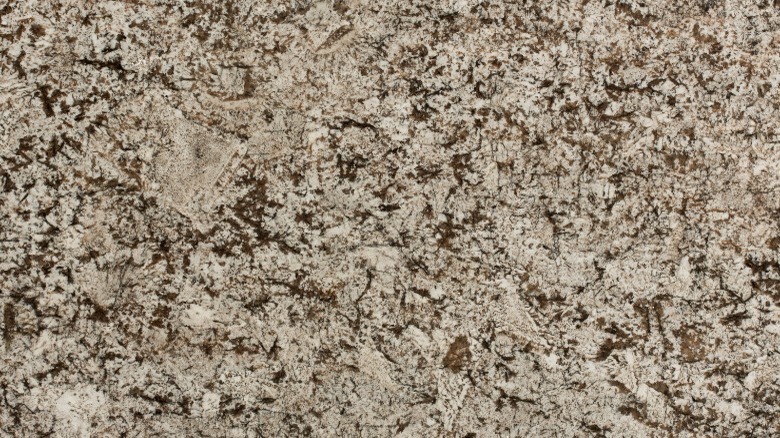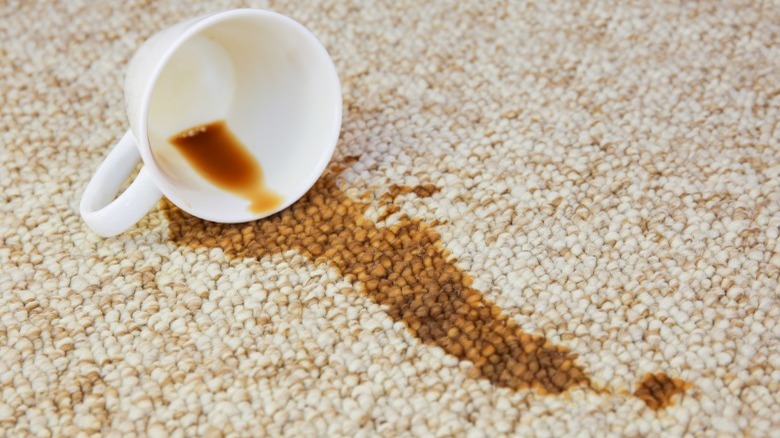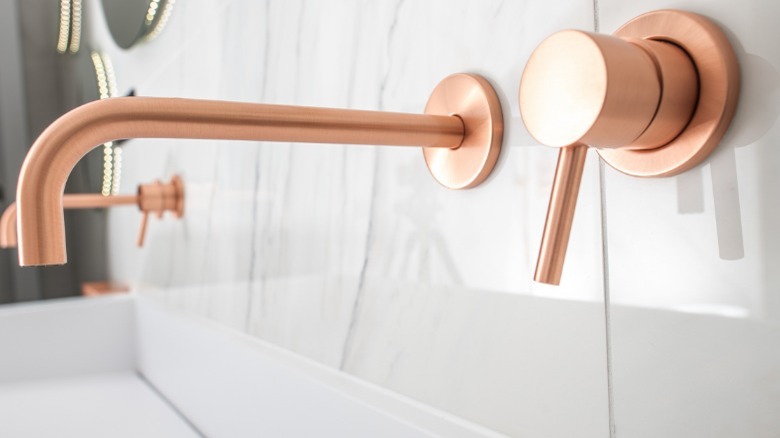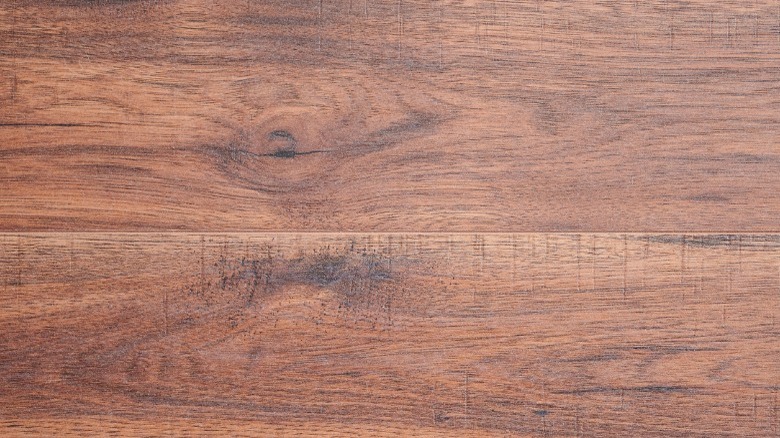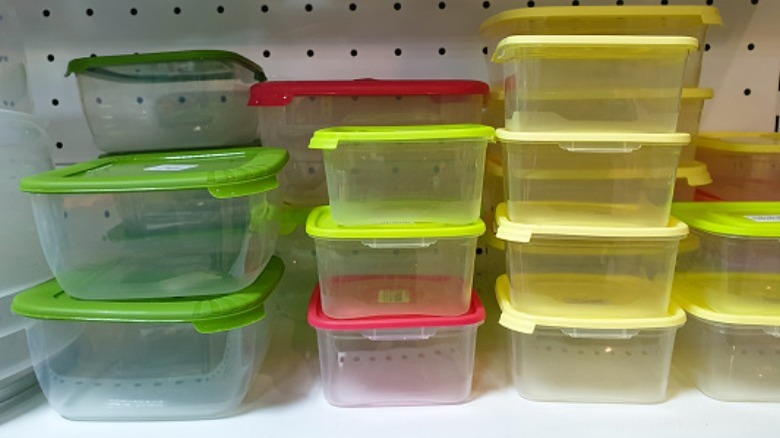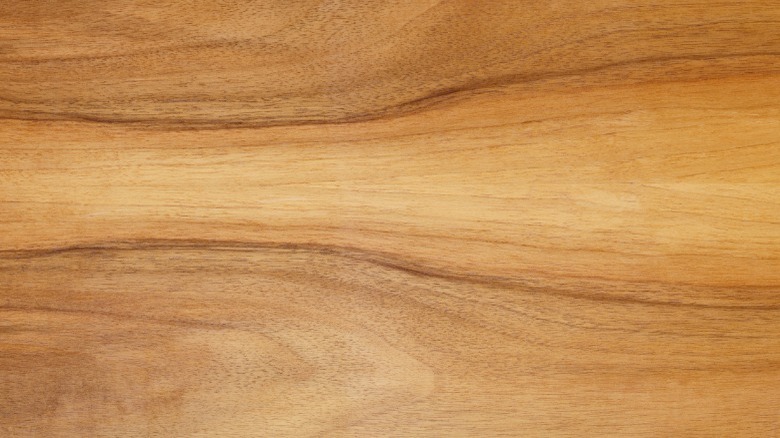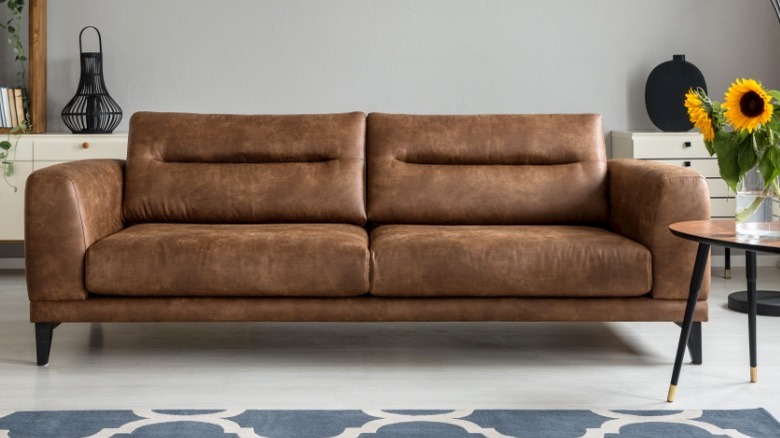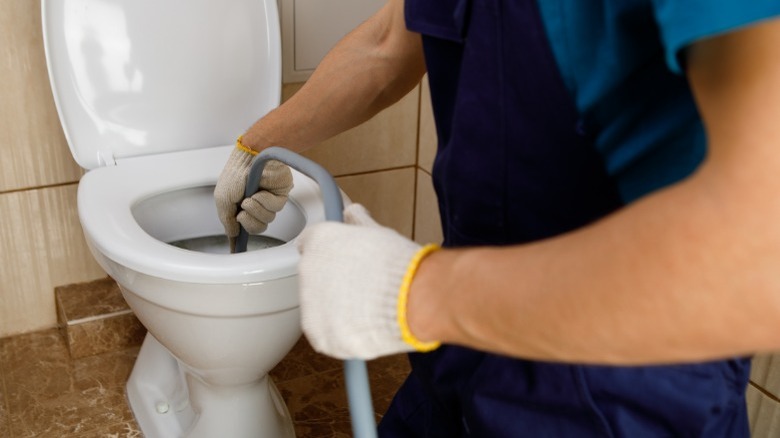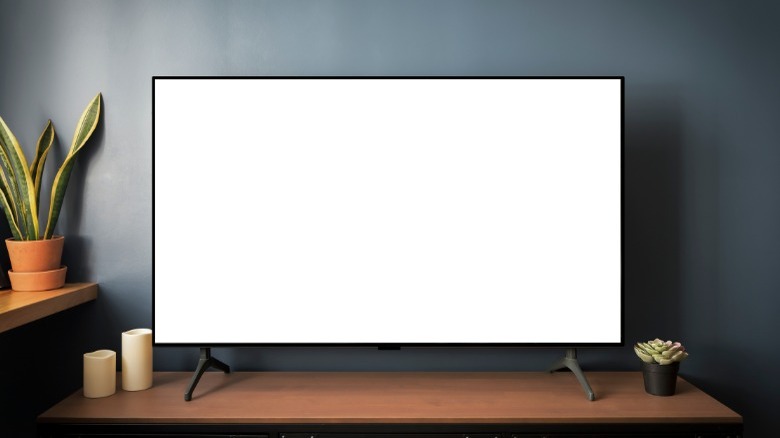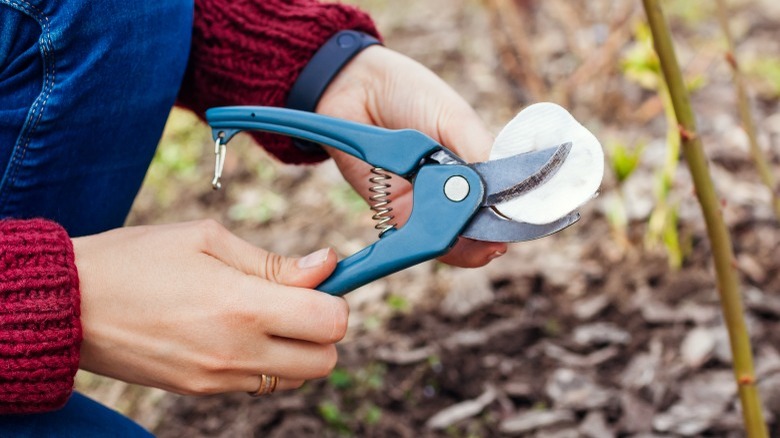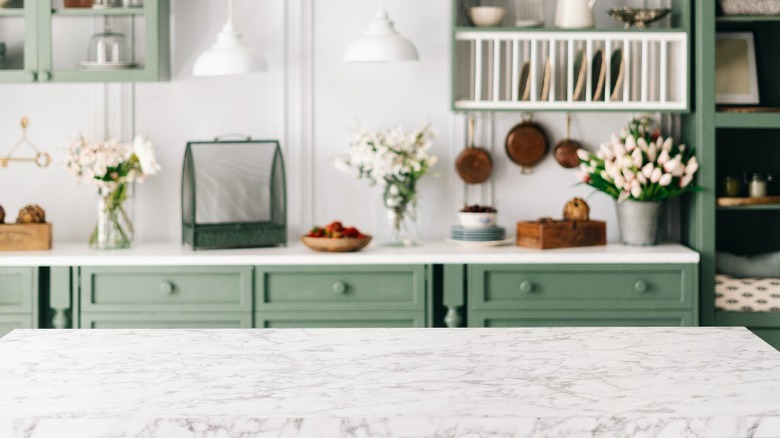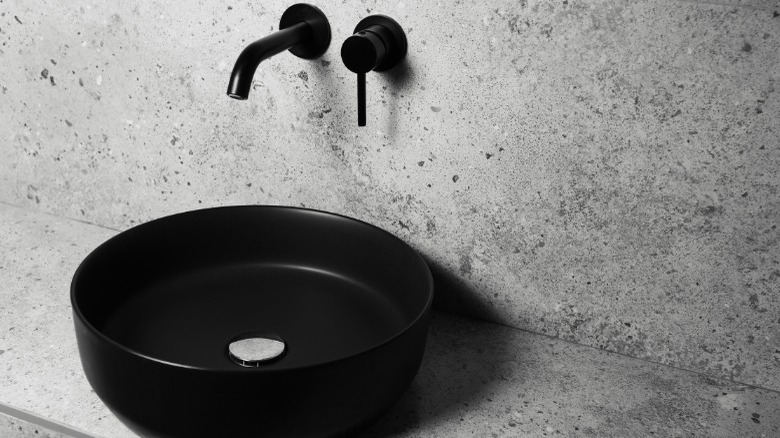13 Household Items That Should Stay Away From Disinfecting Wipes
Disinfecting wipes are made for a specific purpose, but it's common for people to use them for other things. These wipes are best for high-touch surfaces like door knobs and light switches, but you have to be careful because using them on the wrong things causes damage. That's because they have ingredients like alcohol, quaternary ammonium compounds, alcohol, chlorine bleach, and citric acid that aren't compatible with many things in your home. The Clorox Disinfecting Wipes label reads that the product inside works on a variety of surfaces (not ALL surfaces), and that information should be taken to heart even if the wipes are effective and convenient.
These soft, wet cloths serve an important function, but they shouldn't be used randomly on every surface in your home that needs to be cleaned or disinfected. First of all, they are not the same thing as cleaning wipes that replace soap and water for removing organic matter and dirt. Sanitizing wipes are also different because they kill bacteria only – disinfecting wipes kill bacteria and viruses with chemicals. If it seems complicated, don't worry — we've got you covered! Below are the things in your house that these wipes should stay away from.
1. Granite countertops
Shiny granite countertops upgrade kitchens and bathrooms and can be cleaned well enough with soap and water. To maintain a pristine appearance, you can avoid using harsh cleaners with bleach, ammonia, abrasive cleaning tools, and disinfecting wipes. Since granite is porous, people usually opt to have their granite countertops sealed after they're installed and this creates a protective layer to keep out moisture. Using disinfecting wipes on sealed granite is ill-advised because the citric acid is strong enough to penetrate the sealant – the damage could be even worse on unsealed granite. Without protection, the granite can get stained and damaged and might need to be replaced.
The safe way to disinfect granite countertops is with undiluted 70% isopropyl alcohol. Apply it directly to the granite, wipe it with a clean, lint-free cloth, and let the surface air dry. You can also use antibacterial soap if the strong smell of alcohol is bothersome.
2. Carpets and rugs
Carpets and rugs have two things in common with granite: They are porous, and you should keep disinfecting wipes away from them. Cleaning and disinfecting wipes are not made to be used on soft surfaces like these and this makes sense because the fibers readily absorb moisture. Disinfecting wipes can also discolor fabric surfaces. You might see dark spots where you used them, or lighter areas if the wipes contain bleach.
Grabbing a disinfecting wipe to remove a carpet stain probably won't even work because that's not what it is designed for. So the next time someone spills a drink or drops food on your carpet or rug, don't waste your disinfecting wipes. Instead, gently blot as much of the spill as you can with a clean cloth, then treat the stain with a spot remover product, club soda, or something that will actually get it out without damaging anything.
3. Copper fixtures and surfaces
You can use disinfecting wipes on high-touch areas made from certain metals like stainless steel, but other metals are off-limits. Copper and aluminum, for example, are porous and the quaternary ammonium can be corrosive if you use wipes too often on them.
Copper has natural bacteria-fighting properties but if you need to disinfect it, opt for plain old soap and water. Using a disinfecting wipe or even a bit of bleach on a copper sink or aluminum handle once in a blue moon probably won't cause damage, but doing it often could. To combat bacteria and the spread of viruses, keep the surfaces as dry as possible by wiping them down frequently. As for aluminum, a lot of water bottles are made from this metal, and can be cleaned with dish soap and hot water – but if your dishwasher has a sanitizing cycle, this is a perfect occasion to push that button.
4. Wood floors and furniture
Untreated wood is also porous and can absorb the chemicals in disinfecting wipes. This can cause wood floors and furniture to swell up and crack, or warp beyond repair. Yet even when wood surfaces are treated and sealed, they can still be damaged if you repeatedly use disinfecting wipes on them. And you shouldn't have to, because hardwood floors and furniture aren't usually high-touch areas.
The alcohol in disinfecting wipes dulls wood finishes over time, so even if you're vigilant about cleaning and polishing, using them will be detrimental to your hard work. The moisture in the wipes is also problematic since some kinds of wood are more porous than others. Some that fall into this category include maple, oak, and teak. But whatever kind of wood you have, the safest route is to keep it as dry as possible to protect the finish. If you need to disinfect wood, mix up vinegar, a few drops of dishwashing liquid, and water into a spray bottle and spritz away. This will be fine as long as you wipe the surfaces down completely afterward with clean, soft rags.
5. Food containers and dishes
It seems logical that disinfecting wipes should be used on food and drinking storage and serving ware, but this could be a health hazard. The active ingredients in disinfecting wipes shouldn't be ingested. And even if the disinfecting wipe manufacturer claims that its product is all-natural, the ingredients could still lead to nausea, stomachaches, and vomiting.
It is safer to clean your Tupperware containers, regular plates, serving bowls, and utensils by hand or in your dishwasher's sanitizing cycle. And when plastic food containers or drink bottles can't be washed in the machine, use antibacterial dish soap. Also avoid using disinfecting wipes on your pet's food and water dishes, even when they seem exceptionally gross. And since toddlers and pets often put toys in their mouths, don't try to sanitize those with disinfecting wipes, either. That could lead to an emergency room visit. Wash your hands after using the wipes too, because if they're near your mouth afterward you could unknowingly ingest the chemicals and wonder why your stomach or throat hurts.
6. Fabric upholstery
Fabric furniture often becomes dirty and stained from pets and humans. But when that happens, don't reach for the disinfecting wipes. While they can absorb liquid and pick up dirt, the alcohol can cause fabrics to fade. And since fabrics absorb moisture and disinfectant wipes contain a lot of water, the upholstery can shrink, wrinkle, or become rigid when you use too many and/or don't dry the fabric.
Furniture fabric usually doesn't need to be sanitized, but certain kinds can be cleaned and disinfected with vinegar. Read the manufacturer's label first, because you need to be extra careful with delicate materials like wool and silk. Like lemon juice, vinegar is a natural sanitizer that fights certain bacterial pathogens – it isn't effective against COVID, though. To clean and sort-of-sanitize upholstery with vinegar, combine it with three parts of water and a drop of dish soap in a spray bottle. Lightly mist it onto the fabric and gently blot it with a clean, damp sponge or towel. Dry it with more clean towels as air-drying is not recommended. This method works on natural and synthetic fabrics but for the latter, use a 50/50 ratio of the two liquids.
7. Lacquered surfaces
Lacquer is a high-end finish that you'll see on wood furniture, railings, chair molding, and other woodwork. The glossy finish can be compared to varnish but instead of being painted on, lacquers are generally sprayed on. And they don't penetrate wood because they only form protective films.
Lacquers are non-porous and easy to maintain, but it's nearly impossible to remove dents and scratches. You don't need to polish or oil lacquered wood, but you can dust it with microfiber cloths and clean it with gentle soap and water. Keep your disinfecting wipes at a safe distance, because the alcohol will mar the finish. It's essentially a solvent so over time, it will dissolve varnish-like products such as lacquer. If you inadvertently damage lacquered wood with disinfecting wipes, you can try fixing it with 0000 steel wool and rubbing compound. If the damage can't be repaired, the wood may need to be refinished.
8. Leather furniture
Using disinfecting wipes on any kind of leather is a huge no-no because alcohol is one of its worst enemies. Even though disinfectant wipes contain water, the drying properties of alcohol will suck the moisture right out of your beautiful furniture upholstery and before you know it, the leather might dry out, crack, fade, or succumb to all three at the same time.
It's not hard to clean leather since it resists stains. It is a naturally porous material though, so you have to be more vigilant. Vinegar can also clean leather furniture stains, but you need to mix in olive oil to retain moisture. Use half as much vinegar as oil, combine it, spray it on the furniture, and buff it out. You might need to buy leather cleaner and conditioner if that doesn't work. And don't use disinfectant wipes on suede either, because that's just another type of leather.
9. Toilets maybe, plumbing, no
This is an unusual case because disinfecting wipes seem perfect for wiping off toilet seats, rims, and the outsides of commodes. But here's the issue: Disinfectants should remain on surfaces for five to 10 minutes for maximum efficacy, and the residual moisture from wipes evaporates sooner than that. You can use them in a pinch, but they won't be super effective.
And don't clean the inside of a toilet bowl with disinfecting wipes. The wipes won't clean toilet bowl stains, and you might be tempted to drop them into the water and flush them down when finished. Huge mistake.
Cleaning wipes of any kind, including baby wipes and paper towels, should never be flushed down toilets because they can clog up your pipes. These don't dissolve like toilet paper and will clump together. Many stopped-up johns were caused by flushed wipes, and who wants that expensive headache? And on top of that, the globs could eventually cause problems at your local sewer system and wastewater treatment facility. Toss your disinfectant wipes in the trash. Please.
10. LCD screens
You'll find LCD screens on televisions, computers, digital cameras, and other things throughout your household and these definitely qualify as high-touch objects. Computer touch screens are the worst offenders here since they get used so often. You have to be careful since disinfecting wipe chemicals can wear away the outer film on the screens. And if you allow moisture to get into them, they might be rendered permanently unusable.
Computer mouses and keyboards can be disinfected with disinfecting wipes, but you'll need to add a protective barrier to shield your LCD screens. A screen protector is a good solution since it can be sanitized with wipes and cut to fit your devices. Television screens are not touched that often so sanitizing isn't usually a concern; these can be wiped down with microfiber cloths that have been slightly dampened with distilled water. Just be careful not to get any moisture into the sides.
11. Garden tools
Garden tool hygiene is important because it prevents the spread of bacteria, fungi, and viruses between plants in your garden. This means that gardening shears, pruning saws, shovels, rakes, and other equipment should be sanitized after each time they're used. Wouldn't disinfecting wipes be convenient for this? Sorry, but that's not a good idea – you wouldn't want to contaminate your rose bush with quaternary ammonium compounds or bleach.
The safest and most effective way to clean and sterilize garden tools starts by removing dirt with your garden hose, and stuck-on gunk like tree sap can be handled with a multi-purpose household oil. Now, they are ready to be sterilized. Gardeners rely on rubbing alcohol for this, and you can apply it with clean cloths or spray it on as long as you dry the tools when finished. Store them in a clean bucket and they'll be ready when you need them.
12. Marble and uncultured marble
Disinfecting marble can be tricky because it's porous and sensitive to harsh cleaning ingredients like bleach. It also reacts badly to acidic liquids, so it can't be cleaned or disinfected with vinegar like other surfaces. Disinfecting wipes can cause irreparable damage like permanent dullness and etching to expensive marble countertops, tables, and floors.
Can disinfecting wipes be used on cultured marble, though? This isn't the same thing as high-end marble, which is made from natural stone. Cultured marble is human-made, less costly, and is manufactured with some real marble plus synthetic materials that get formed and coated with protective gels. That last part makes it non-porous. But don't grab those wipes just yet, because if they contain ammonia that will make the coating turn an unsightly yellow. Clean both kinds of your marble with a DIY cleaning spray made with antibacterial soap, rubbing alcohol, and water.
13. Matte plumbing fixtures and accessories
Black matte lends a unique elegance to plumbing fixtures, handles, and other accessories, as long as it's treated right. It needs to be cleaned often since the dark color won't hide water spots, grease, and dirt. Resist the urge to grab a disinfecting wipe since they are acidic and can damage the finish.
These finishes can be cleaned with non-acidic soap and water and dried with microfiber cloths. Even though vinegar is acidic, you can dilute it with 1.5 to 2 parts of water in a spray bottle and use that. Don't use general-purpose bathroom cleaners or glass cleaners, because the ingredients might be too harsh. Products that contain wax fillers are also bad for black matte because they leave residues that mar the finish. And always rinse the fixtures with water after cleaning them. It's a lot of upkeep – black matte is beautiful to behold but boy, is it picky.
Ultimately, it pays to read the instructions for whichever brand of disinfecting wipes you use, test them on a small spot if you're unsure, and follow these recommendations for surfaces you should keep disinfecting wipes away from.

